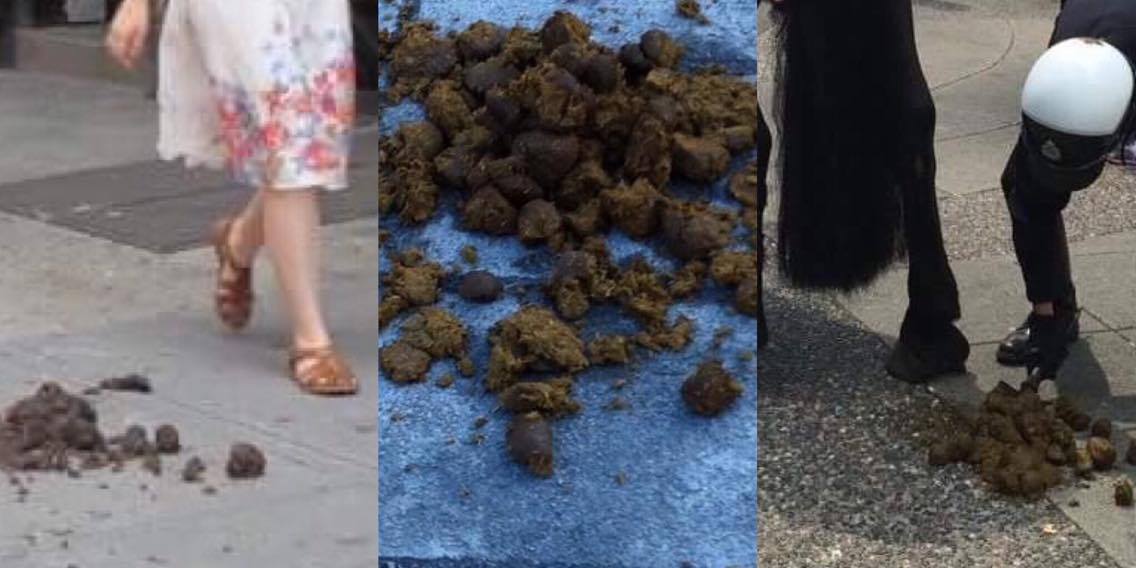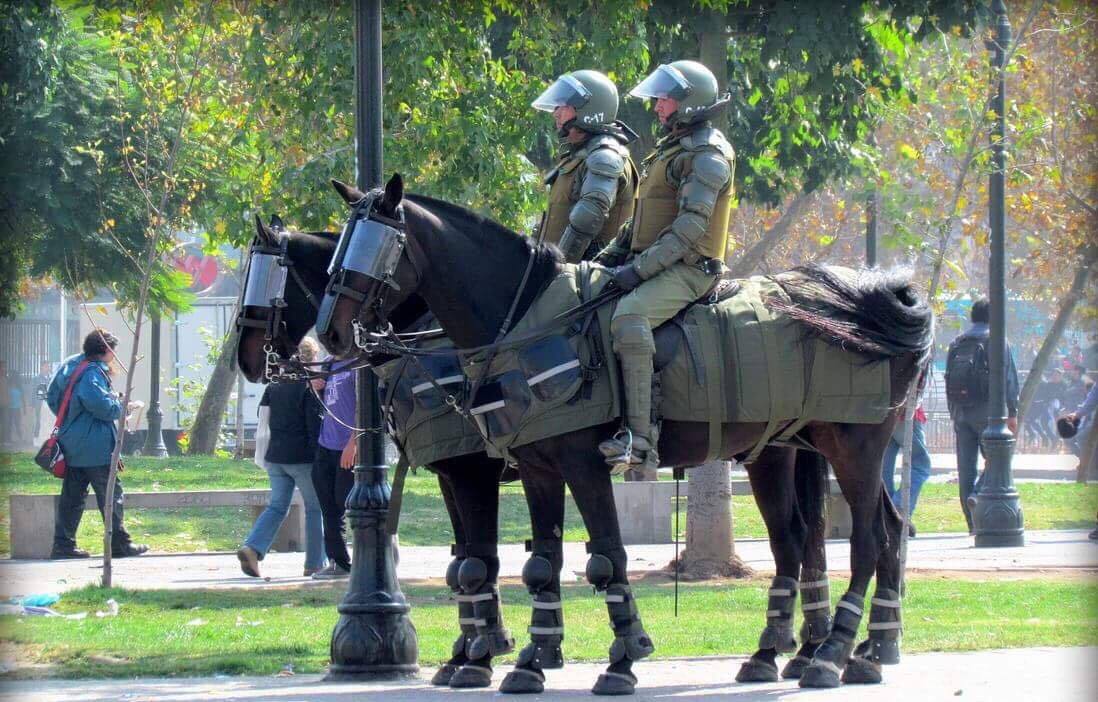Law Enforcement On A High Horse: Why Are There Horse Cops in 2017?
By Hannah Harkness
I have always been mystified by horse cops. Until I wrote this article, it was just a stump topic I had for angry bar conversations about law enforcement overreach. I never understood them. I wondered how it could possibly be healthy for horses to do police work. I only ever saw police horses in the context of riot control, which seemed like the most dangerous possible environment.
I wondered why you would ride a horse if you have to get off the horse to arrest someone. I wondered why cops would spend all of the money to take care of and feed a horse when you have a perfectly good squad car that does not eat, sleep, get sick, or poop. It just seemed like grandstanding. Even the term “mounted police officer” seems like a small dick over compensation in an almost literal sense.
So I decided to do some digging and figure out why the hell police officers were acting out what I perceived as a misplaced John Wayne fantasy in 2017. I ended up getting a lot more than I bargained for when I dove down this internet rabbit hole. Every debate has a heated comment thread dedicated to it somewhere on the internet, and I managed to find one about whether or not cops should be on horses.
Currently, the NYPD has 79 horse cops and 60 horses, which has shrunk considerably over the last decade (a hilarious amount of pro-horse cop people quoted said this is because of “oat counters” creating the budgets). It is still one of the biggest mounted units in the country. On November 18th, 2015, the ribbon was cut on a new 30 million dollar stable for 27 horses on 53rd street. This largely slipped the news due to the headlines being occupied by the 2015 terrorist attacks in Paris. So let’s get into the pro and anti-horse cop arguments (you won’t hear that sentence again for a while).
The main defense for still using horses in police work is that they are “10-foot tall cops”.
Several police officers in the articles I read and the subsequent comment threads stated that one cop on a horse is worth 10 on foot specifically because of visibility. They say that people feel safer because they can see the police officer more easily and that the police officer has a better view of what is going on if they are on a horse. I also continually see references to one incident where two street vendors in Times Square saw smoke rising from the street from what turned out to be a car bomb and had immediate assistance because they were able to see a police officer on a horse hovering above a crowd.
Personally, I’m always suspicious when one success story gets paraded around over and over again because that usually happens when there are a series of failure stories trying to be swept under the rug.
And, if I’m not mistaken there is an NYPD station in Times Square with a giant neon sign on it, but I’ll give that point to them anyway – the visibility helped in that situation. The main argument I see against the “10-foot tall cop” defense (apart from the general humanitarian argument about putting the animals in danger) is that there are T3 scooters available that put police officers 9 inches above the crowd, are less expensive and are also less intimidating.
Another frequent defense is that horses help police with engagement. My favorite quote I came across researching this was “Nobody ever tried to pet my police car, but they line up to pet my horse”. Uhh, …no shit buddy. If I’m not mistaken, petting police cars leads you to putting your hands flat on them and spreading your legs.
My opinion on this is that police should conduct themselves in a way where they don’t need horses to make them appear less threatening (maybe ease up on the police brutality and you won’t need a horse?), or at the very least pick methods of engagement that don’t involve bringing an animal into a potentially hazardous environment.
Community events are effective. I remember when I was a kid the local police force had “cop cards” that were like baseball trading cards for different police officers. My brother and I loved those when we were kids and it put us in a situation where we wanted to have friendly one-on-one interactions with police officers. Personally, I’m a huge fan of the Philadelphia Police Department’s YouTube channel: check out this video of how to find your police service areas they made with action figures. They probably wouldn’t like me using this defense though, they have a mounted unit that they are very fond of.
Lastly, there is a major “preserving history” argument of the continued use of police horses. People want to see police horses around as a whimsical hark back to the old days when we needed to shovel horse shit in order to enforce laws. Multiple police officers in these articles stated that budget counting is the current opposition to mounted police, but the real reason they are out is because of Henry Ford. This leaves me asking the question “Why are our taxes going towards a historical re-enactment?”. My favorite “both parties are wrong” moment in the comment threads was when people were both arguing that horses like the work AND that they don’t like the work. How do you know? No matter how much peanut butter you give them, they are not going to have a Mr. Ed moment and tell you whether or not they enjoy public service.
Of course, the biggest piece of this is the safety of the animals. Police horses are known to be very well taken care of and very well trained (I would hope so if the stable set the city back a cool $30 million). They are primarily trained not to react poorly in violent situations. Mounted police also say that horses eyes do not react to tear gas in the same way that human eyes do. Horses are also outfitted with special gear to keep them safe in riot situations, including lighter synthetic saddles to compensate for the added police gear weight, special perspex masks to prevent injury while not limiting sight, and rubber horseshoes to ease up the shock from the pavement.
Despite these precautions, there are many documented incidents of police horses being hurt. Actually, there are more documents of the horses being hurt by people and dogs than the people being hurt by the horses. People do get hurt-I read an account of a woman who got injured by a horse in the 1998 protest in lieu of Matthew Shephard’s death and I know that a woman’s foot was broken by a police horse in Philadelphia when the Occupy encampment was broken up.
But there are far more accounts of police horses being attacked by protestors, bitten by dogs, even hurt by the police officers themselves.
Six horses were injured in the million mask march in London, one injured when a police officer fell off his back that horse sustained damage to his side and hind legs. It’s also widely agreed upon by veterinarians that hard surfaces and soft surface like sand are not healthy for horses to walk on some of the damage can be reduced by changing shoes, but it’s still not ideal for the health of the animals.








